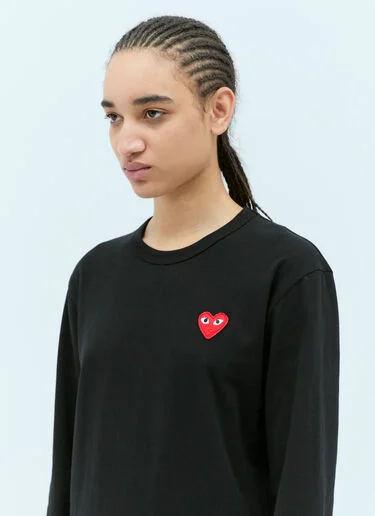In a world obsessed with polish and presentation, Comme des Garçons emerged like a glitch in the matrix. Born in Tokyo in 1969, it was never meant to play by the rules. Rei Kawakubo, its elusive founder, didn’t enter the fashion world to beautify it—she came to disrupt it. From her very first collection, she twisted expectations like threads on a loom.
By the time the brand hit Paris in the early ’80s, the fashion elite weren’t just confused—they were rattled. Torn fabrics, somber palettes, and shapes that rejected symmetry outright? It wasn’t just new. It was heresy. And that’s exactly why it mattered.
Anti-Fashion as Design Language
For Comme des Garçons, beauty isn’t about elegance. It’s about intrigue. Each piece is a puzzle—unfinished, unexpected, sometimes uncomfortable. Kawakubo doesn’t design to please the eye. She designs to challenge the gaze. Hemlines are hacked, patterns clash like rival siblings, and garments sometimes look inside-out… because maybe that’s how they should be.
Imperfection here isn’t an accident. It’s the whole thesis. In a world chasing perfection, Comme opts for provocation.
Breaking Gender Binaries with Fabric
Gender? Comme des Garçons shrugs. The brand has been ignoring binaries for decades, long before gender-fluid fashion became a trend. Blazers built for no one in particular. Skirts as shields. Shirts that ask nothing of the chest they hang on. It’s a wardrobe for souls, not sexes.
There’s something electric about clothing that doesn’t care if it’s ‘masculine’ or ‘feminine.’ It just exists—fearlessly, honestly. Comme designs outfits for identities that refuse to be boxed or barcoded.
Silhouettes That Disturb the Eye
A Comme silhouette rarely flatters the body in the traditional sense—and that’s exactly the point. These pieces aren’t tailored to shape you into society’s ideal. They’re made to let you reshape the ideal itself.
Think: bulbous curves, rigid corners, garments that balloon where others cinch. Some look more like sculpture than clothing. They play with volume like it’s clay. What emerges isn’t about form-fitting—it’s about form-defying.
Monochrome and Minimalism with Maximal Intent
Black. White. Beige. Grey. These aren't afterthoughts in the Comme universe—they’re core characters. Kawakubo uses neutral tones not as limitations but as tools. Black becomes void. White becomes echo. The absence of color is often louder than neon.
This palette gives space for shape, structure, and emotion to speak louder. And when color does arrive—hot pinks, acid greens—it’s explosive. Rare. Intentional. A quiet rebellion painted loud.
Subversive Collaborations Without Selling Out
While most luxury houses treat collaborations as marketing fodder, Comme des Garçons uses them like experiments in cultural chemistry. Whether teaming with Nike, Supreme, or even Louis Vuitton, the brand never dilutes its DNA. Instead, it distorts the mainstream to fit its shape.
The results are pieces that straddle the line between satire and sincerity. A Comme x Converse sneaker isn’t just hypewear—it’s a Trojan horse of design theory, smuggled into pop culture.
Retail as Theater: The Comme Shopping Experience
Walk into a Comme des Garçons space and you don’t feel like a customer. You feel like a witness. Whether it’s the industrial surrealism of a Dover Street Market store or the stark serenity of a flagship boutique, the retail environment feels like a curated protest against consumerism itself.
Clothes hang like art. Rooms change like moods. Prices are steep, yes—but the experience is priceless in originality.
Legacy of a Quiet Radical
Kawakubo rarely speaks. She lets her creations scream for her. And over five decades, that silence has said more than entire fashion weeks. Young designers cite her not just as inspiration, but as permission—to make strange things, to stay stubborn, to design without asking.
Comme des Garçons didn’t just challenge norms. It detonated them. And from the wreckage came a new blueprint for fashion: one that embraces the awkward, honors the abstract, and never, ever begs for approval.
This is how Comme des Garçons challenges norms: by never asking if it should.




